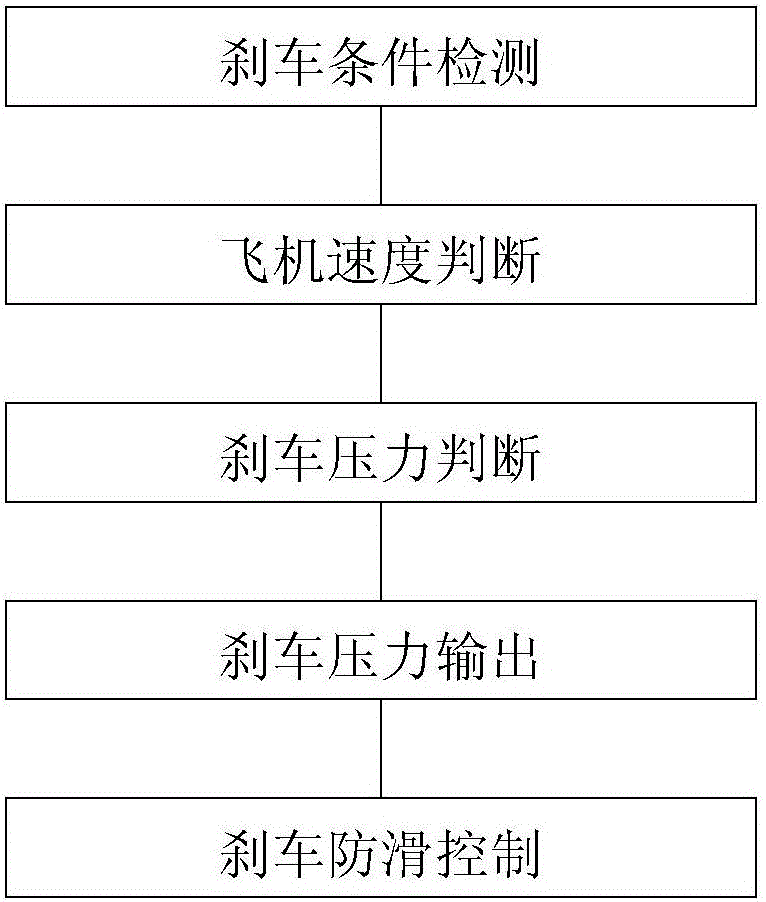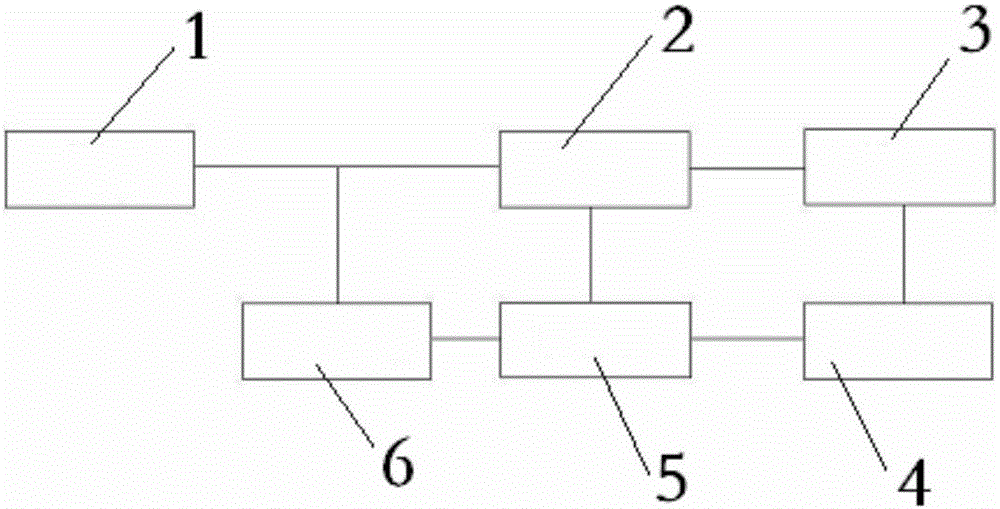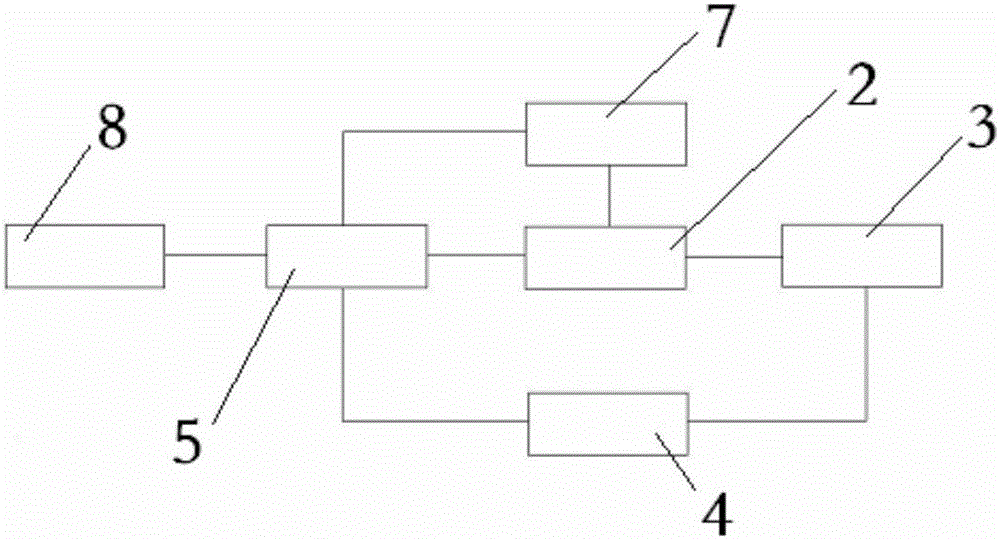Antiskid control method for aircraft brake and aircraft brake system
A control method and technology of a braking system, which are applied in the field of aircraft braking and anti-skid control, can solve the problems of longer rolling distance, reduced braking efficiency, and small combination coefficient between wheels and runways, so as to reduce the control burden and psychological pressure, and solve potential problems. Accident risk, effect of reducing braking skill requirements
- Summary
- Abstract
- Description
- Claims
- Application Information
AI Technical Summary
Problems solved by technology
Method used
Image
Examples
Embodiment 1
[0037] This embodiment is a method for controlling anti-skidding of aircraft brakes.
[0038] The front landing gear wheels of modern aircraft generally do not have brakes, which are called brakeless wheels; the main landing gear wheels are equipped with brakes, which are called braked wheels or braked wheels. This embodiment proposes an aircraft anti-skid braking control method suitable for modern aircraft.
[0039] The concrete process of this embodiment is:
[0040] The first step: brake condition detection. Said braking conditions include aircraft speed, pressure and pilot braking commands.
[0041] The brakes start to detect braking conditions. The wheel speed sensor detects the aircraft speed when braking. If the wheel slips or locks up, the speed signal of the wheel speed sensor is abnormal; the aircraft speed is provided by the flight reference system. The driver's braking command is obtained through a pressure sensor.
[0042] Step 2: Aircraft speed judgment. Co...
Embodiment 2
[0053] This embodiment is an aircraft braking system proposed to implement the aircraft braking anti-skid control method described in Embodiment 1.
[0054] This embodiment includes a brake valve 1 , a pressure sensor 6 , a wheel speed sensor 4 , a control box 5 and an electro-hydraulic servo valve 2 . in:
[0055] The brake valve 1 is installed under the cockpit floor, and is operated by the driver by depressing the brake pedal to output the required brake pressure. The three hydraulic interfaces of the brake valve are the oil inlet of the brake valve, the brake port of the brake valve and the oil return port of the brake valve; the oil inlet of the brake valve is connected with the hydraulic source pipeline of the aircraft pressure supply system, and the brake port of the brake valve is connected with the electric The oil inlet pipeline of hydraulic servo valve 2 is connected, and the oil return port of the brake valve is connected with the aircraft oil return pipeline.
...
Embodiment 3
[0066] This embodiment is an aircraft fly-by-wire braking system proposed to implement the aircraft brake anti-skid control method described in Embodiment 1.
[0067] This embodiment includes a brake command sensor 8 , a wheel speed sensor 4 , a control box 5 , an electromagnetic hydraulic lock 7 and an electro-hydraulic servo valve 2 .
[0068] Wheel speed detection is done by the wheel speed sensor accessory. Antiskid control is done by the control box. The electro-hydraulic servo valve responds to the control current signal of the control box, outputs and adjusts the brake pressure output to the brake wheel.
[0069] The aircraft speed during braking is provided by the wheel speed sensor detection. If the speed signal is abnormal due to wheel slipping or locking, the aircraft speed will be provided by the flight reference system. The driver brake command pressure is provided by the brake command sensor.
[0070]The brake command sensor 8 is installed under the cockpit f...
PUM
 Login to View More
Login to View More Abstract
Description
Claims
Application Information
 Login to View More
Login to View More - R&D
- Intellectual Property
- Life Sciences
- Materials
- Tech Scout
- Unparalleled Data Quality
- Higher Quality Content
- 60% Fewer Hallucinations
Browse by: Latest US Patents, China's latest patents, Technical Efficacy Thesaurus, Application Domain, Technology Topic, Popular Technical Reports.
© 2025 PatSnap. All rights reserved.Legal|Privacy policy|Modern Slavery Act Transparency Statement|Sitemap|About US| Contact US: help@patsnap.com



